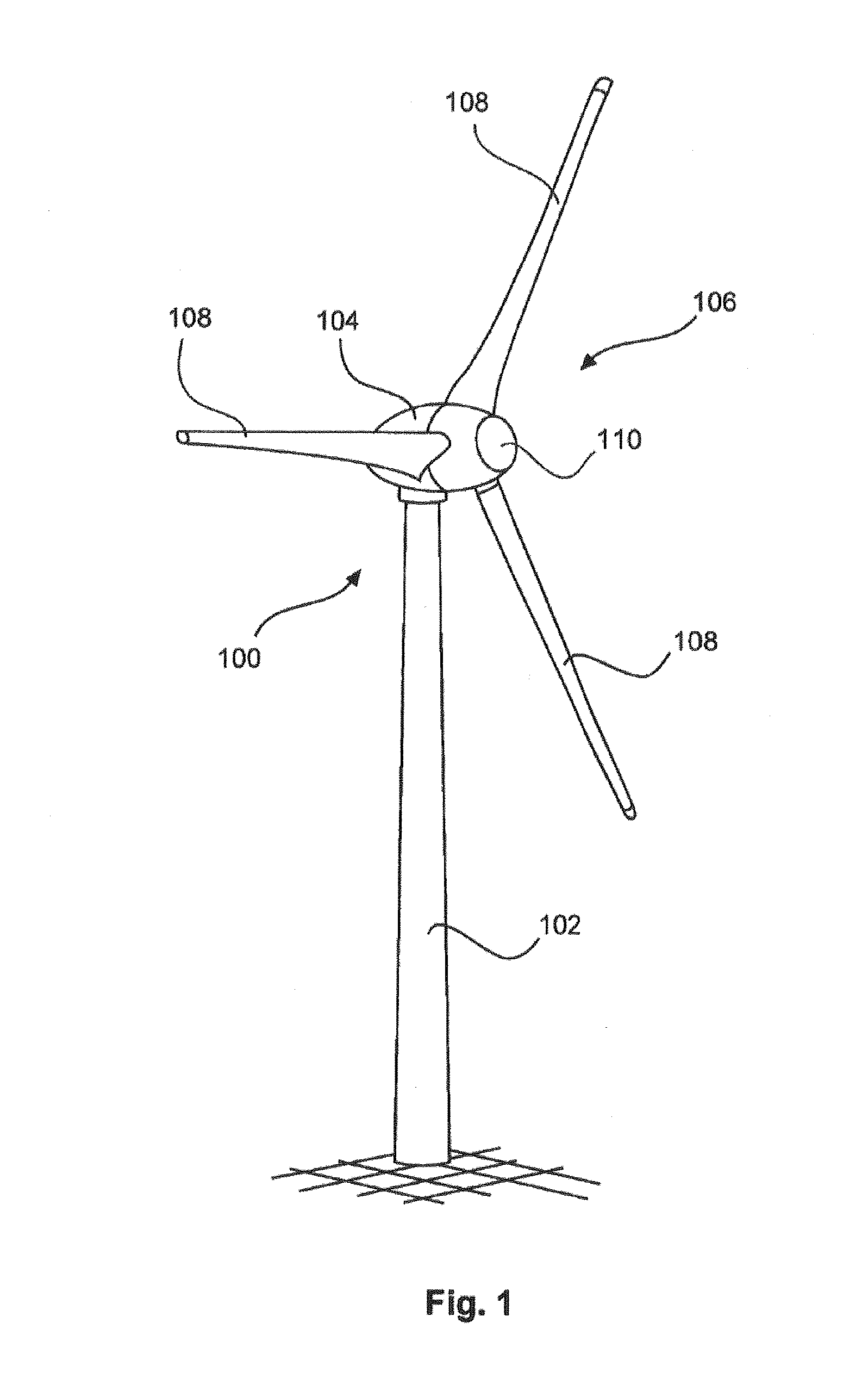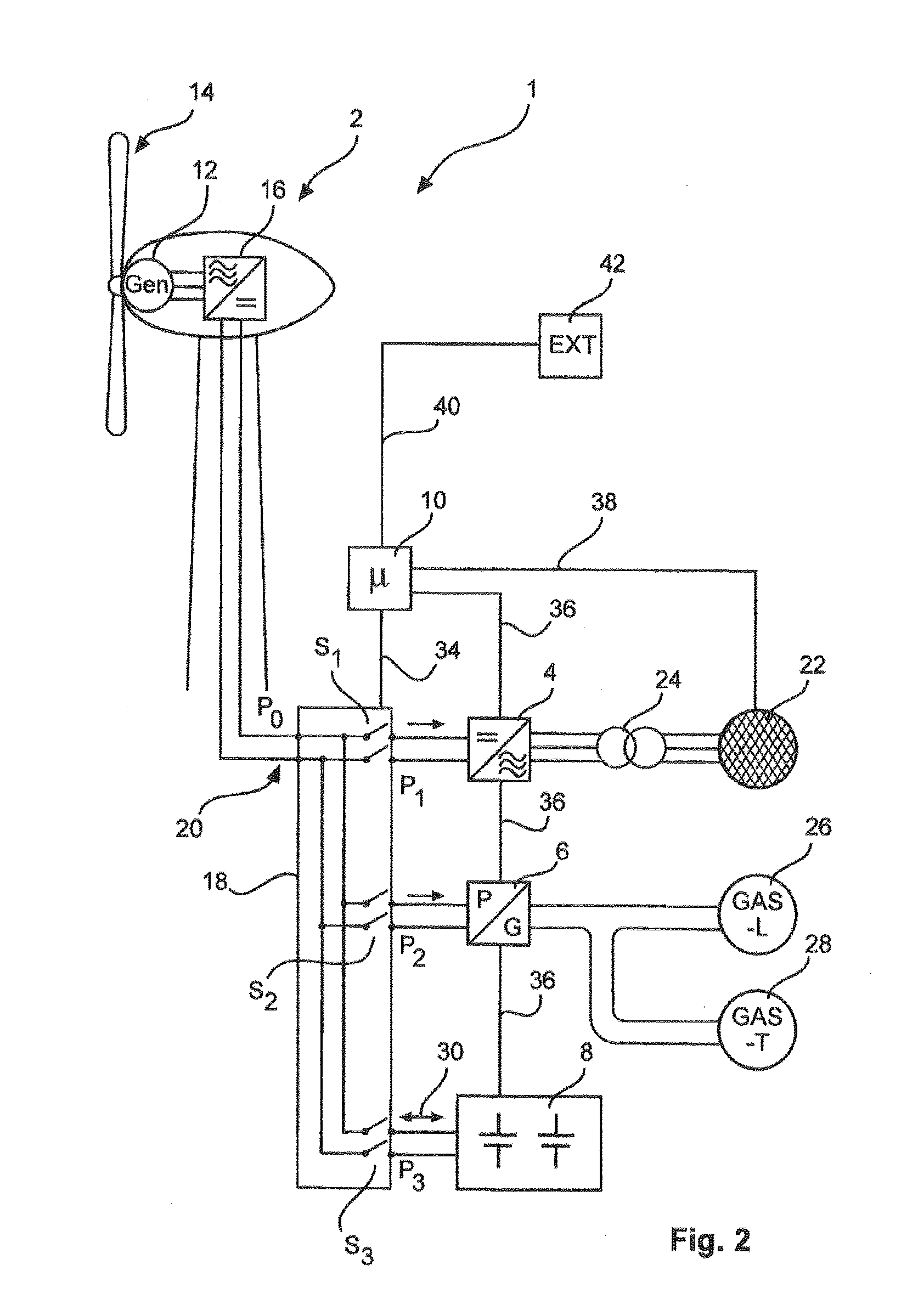Method for controlling an arrangement for supplying electric current to a power supply system
a technology of power supply system and arrangement, applied in the integration of power network operation system, machine/engine, greenhouse gas reduction, etc., can solve the problems of increasing power subject to narrow limits, increasing the complexity of converting the kinetic energy of the rotor, and not being able to solve the problem of increasing the power, so as to avoid unexpected fluctuations, improve the stability of the system, and stabilize the feed
- Summary
- Abstract
- Description
- Claims
- Application Information
AI Technical Summary
Benefits of technology
Problems solved by technology
Method used
Image
Examples
Embodiment Construction
[0052]FIG. 1 shows a wind energy installation 100 with a tower 102 and a pod 104. A rotor 106 with three rotor blades 108 and a spinner 110 is arranged on the pod 104. The rotor 106 is caused to perform a rotary movement during operation owing to the wind and thereby drives a generator in the pod 104.
[0053]FIG. 2 shows a feed arrangement 1 with a wind energy installation 2, such as the wind energy installation 100 of FIG. 1, a feed means 4, such as an inverter, an electrical consumer 6, which in one embodiment is a power conversion apparatus 6, an electrical store 8 and a control device 10, which in the illustrated embodiment is a microcontroller 10.
[0054]During operation in accordance with one operating mode, in which there is sufficient wind, the wind energy installation 2 generates an electrical AC voltage by virtue of the generator 12, which is driven by the wind via the aerodynamic rotor 14. This generated AC voltage is supplied to a rectifier 16, which generates a DC voltage f...
PUM
 Login to View More
Login to View More Abstract
Description
Claims
Application Information
 Login to View More
Login to View More - R&D
- Intellectual Property
- Life Sciences
- Materials
- Tech Scout
- Unparalleled Data Quality
- Higher Quality Content
- 60% Fewer Hallucinations
Browse by: Latest US Patents, China's latest patents, Technical Efficacy Thesaurus, Application Domain, Technology Topic, Popular Technical Reports.
© 2025 PatSnap. All rights reserved.Legal|Privacy policy|Modern Slavery Act Transparency Statement|Sitemap|About US| Contact US: help@patsnap.com



